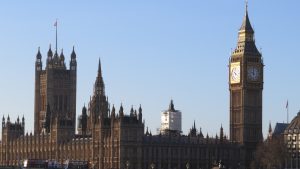
This year, Zoopla crowned Dalston the UK’s top property hotspot after house prices in the neighbourhood rocketed 60 per cent over the last five years.
Shoreditch came second, with prices shooting up 58 per cent over the period. Both of these locations are celebrated for their hipster cafes and second-hand furniture shops – but they’re fast becoming unaffordable.
So where’s next? Which parts of London are still reasonable, but might become home to an Everyman cinema in a few years?
James Evans, CEO of estate agents Douglas & Gordon, has tipped Streatham and Peckham as key growth areas next year.
“The property market in places like Brixton and Dulwich are now well established,” he said. “So demand is spreading to areas like Streatham and Peckham. These are the areas to watch if you’re looking for strong house price growth.”
Outer boroughs Barnet and Bromley are also two areas to look out for, according to Alex Gosling, chief executive of website House Simple. These locations are particularly attractive to families and couples trying to upsize.
“Average property prices in Barnet are below £600,000, and there’s a good range of top performing schools to choose from. The transport links into central London are excellent, offering both Overground and Underground services,” Gosling said.
“Bromley offers even better value for money with average prices below £450,000. And for couples looking to upsize, you can buy a house for the same price as a one bed flat in many Zone 2 areas of London.”
Where to buy to take advantage of the Elizabeth line?
For people looking to take advantage of the infrastructure investment taking off in the capital, locations along the Elizabeth line are a great property investment. Rob Weaver, director of investments at crowdfunding platform Property Partner, said Woolwich could become a good spot for city workers when the new high-speed line opens.
Weaver said: As we creep closer to 2018 when services on the new Elizabeth line are expected to begin, then demand will undoubtedly intensify particularly on the Western side from West Drayton through the line to Acton.
But don’t forget south East London, which may seem at the moment a long way from the centre. But by the end of 2018, Woolwich – via the new station at Royal Arsenal – will be connected not just to Canary Wharf but also Central London and Heathrow. With an anticipated 12 trains per hour, the area is likely to see even more buyer interest.
One hot-spot that will buck London’s low-growth trend in 2017?
Founder and chief executive of eMoov, Russell Quirk, said Sutton will be one of the few boroughs that bucks “the doom and gloom trend of current London market predictions”. House prices in the area have jumped by £30,000 since December last year – far beyond the UK average of £20,000.
At £378,000, the average house price in Sutton is £100,000 cheaper than the average for the capital.
“Not only is the borough currently the second hottest spot for buyer demand right now, it has also seen the largest turnaround in buyer demand over the last year,” Quirk said.
“This comes as no surprise due to the current trend of aspirational homebuyers looking to the outer boroughs of London to find more affordable property prices.”

